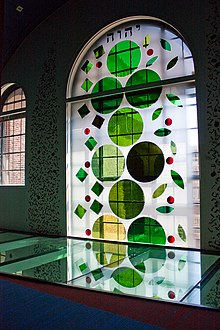<<GotoNote

The tree of life is a diagram used in various mystical traditions.[1] It usually consists of 10 nodes symbolizing different archetypes and 22 lines connecting the nodes.[2] The nodes are often arranged into three columns to represent that they belong to a common category.[2]
The nodes are usually represented as spheres and the lines are usually represented as paths.[2] The nodes usually represent encompassing aspects of existence, God, or the human psyche.[2][3][4] The lines usually represent the relationship between the concepts ascribed to the spheres or a symbolic description of the requirements to go from one sphere to another.[2][4] The nodes are also associated to deities, angels, celestial bodies, values, single colors or combinations of them, and specific numbers.[3][5] The columns are usually symbolized as pillars.[2] These pillars usually represent different kinds of values, electric charges, or types of ceremonial magic.[2][5] It is usually referred to as the Kabbalistic tree of life in order to distinguish it from other concepts with the same name.[1][6] In the Jewish Kabbalah, the nodes are called sephiroth.[2] The diagram is also used by Christian Cabbala, Hermetic Qabalah and Theosophy.[5][6][7] The diagram is believed to be derivable from the flower of life.[3]
Scholars believe that the concept of a tree of life with different spheres representing encompassing aspects of reality traces its origins back to Assyria in the 9th century BC.[1][6] The Assyrians also assigned values and specific numbers to their deities similar to those used by the later Jewish Kabbalah.[1][6] The beginnings of the Jewish Kabbalah are traced back by scholars to the Medieval Age, originating in the Book of Bahir and the Book of Zohar.[5][6] However, the first historical instance of the modern diagram appeared centuries later in the Latin translation of Gates of Light in the year 1516.[5] The version used by modern Jewish Kabbalists first appeared in the print edition of Pardes Rimonim in 1591.[5]
According to Chassidist Kabbalist scholars, the tree of life is to be interpreted in the following way:[8]
...https://en.wikipedia.org/wiki/Tree_of_life_(Kabbalah)